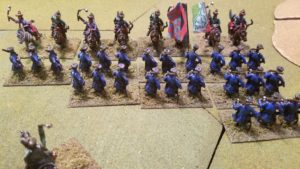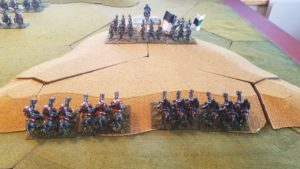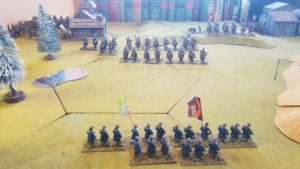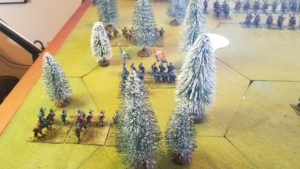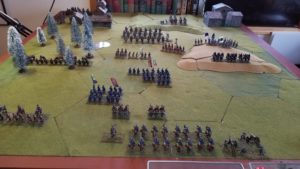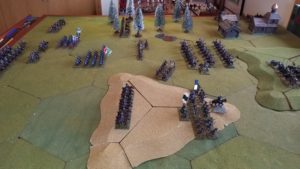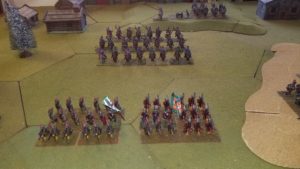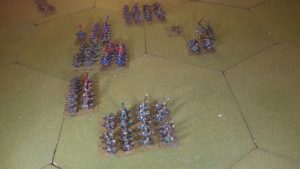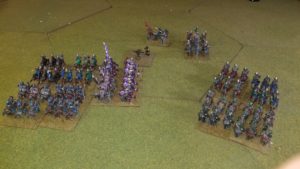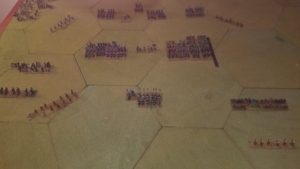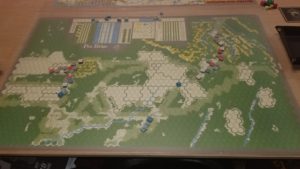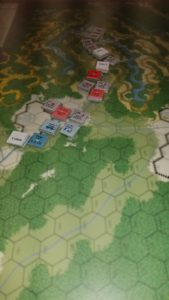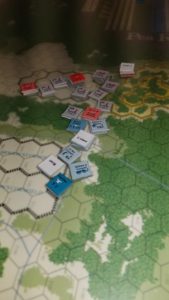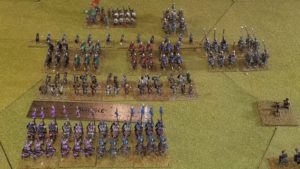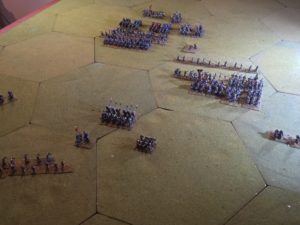Game is sputtering along, with my bleatings about Initiative and Response checks a broken record , especially with the Experienced level units forming the bulk of both armies.
Sat down last night and worked my way through these problems.
Experienced units need a modified Initiative percentage die roll of 40 or lower to charge or respond to a new order (not to mention fire or move for the first time in the game).
Without command figures in close proximity, the chances of passing are pretty low.
Response tests are also problematic, especially for units with over ten percent casualties (that’s the loss of only one (1) figure for most units). This test involves a base Morale Value Against Percentage Losses Suffered, added an average die roll, then modified.
Once again, the proximity of a unit’s General and unengaged friendly units is helpful.
An example: An Experienced unit with ten percent casualties has a base morale value of 5. In order to remain “Steady”, in response to an event, it must have a modified score of eleven (11). Assuming a die roll of three (3), it still needs a net of three positive modifiers to remain “Steady”.
The lesson learned is to increase the number of generals per army, and keep troops close proximity to one another.
If this doesn’t happen, most units will refuse to charge or hold, instead retreating or routing after absorbing a limited number of casualties.
In this game, the Cossacks continue to march up “their” hill, come into contact (or threat of contact), and retreat back down. Same for the Muscovite cavalry in the center. They absorb a casualty loss from Haiduk musketry, and then fall back.
Very tempted to reset. On the other hand, I’d like to get my Transylvanians on the table.
